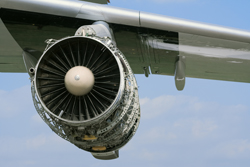Modelling heat transfer in jet engines
Combustion engines, also called jet engines or gas turbine engines, are designed to burn fuel in a process aptly called combustion. They transfer chemical energy in the bonds holding the atoms of fuel together into mechanical energy to do work. Ignition of fuel in the presence of oxygen produces hot exhaust gases. These are funnelled through a nozzle that accelerates them and causes the turbine blades to turn, much like the wind turns a wind mill, providing the thrust to lift the plane. Economic and environmental pressures encourage the aerospace industry to develop lighter and more efficient engines with lower emissions and lower production and operating costs. European researchers intent on building on the success of the previous ‘Aerothermal investigations on turbine endwalls and blades’ (AITEB) project developed the AITEB-2 project. Their goal was to develop an aero-thermodynamic turbine engine design resulting in reduction in engine weight, time-to-market, costs and emissions. Scientists focused on the interaction of hot gases with colder walls, the site of so-called conjugate heat transfer, a difficult topic for which many necessary numerical tools had to be developed including a massively parallel solver. Two case studies were evaluated, a flame and its interaction with a wall and a flow of hot gases and their interaction with a turbine blade. The complicated computational fluid dynamics (CFD) numerical methods developed for the AITEB-2 project, including a large-eddy simulation (LES) turbulence solver, provided important insight into efficient gas turbine design. Further numerical studies and optimisation combined with experimental work have the potential to make an important impact on the aeroengine design industry.







